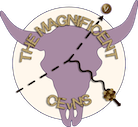Speaker
Description
The CONNIE experiment began operating with Skipper-CCDs in 2021, marking the first use of Skipper technology in a reactor neutrino experiment. This technology enables charge measurements with sub-electron resolution, enhancing the ability to detect and characterize low-energy signals. As a result, the experiment achieved a detection threshold as low as 15 eV. Data collected with exposures of 14.9 g-days (reactor-on) and 3.5 g-days (reactor-off) were used to set upper limits on the CEvNS interaction rate comparable to those obtained in earlier runs with standard CCDs and significantly larger exposures. Beyond the CEvNS search, we explored the broader physics potential of Skipper-CCDs through three dedicated analyses: constraints on neutrino interactions via light vector mediators, limits on dark matter-electron scattering from diurnal modulation, and a search for relativistic millicharged particles. In the latter, we set world-leading bounds on the charge of particles with masses between 1 eV and 10 MeV, combining data from CONNIE with results from a complementary Skipper-CCD experiment at the Atucha II reactor. In 2024, a new Multi-Chip Module (MCM) with 16 Skipper-CCDs, based on the Oscura experiment design, was installed at CONNIE, increasing the active silicon mass to 8 grams. In this talk, We will present the latest results, share progress on the MCM commissioning, and discuss future prospects for CEvNS detection with Skipper-CCDs.
